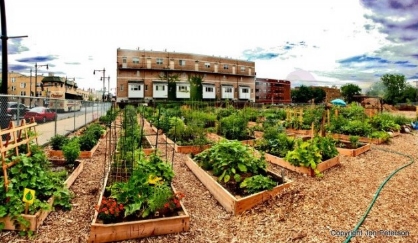
Read on to learn more about the benefits of raised bed gardening and tips on how to start one. (h/t to CommonSenseHome.com)
Benefits of raised-bed gardens
Traditional in-ground gardens are great, but tending to one can be tedious and grueling work. It involves tilling, weeding and watering, among other monotonous tasks. That's why many gardeners are switching to raised bed gardening. This type of gardening is great if your soil is hard or compacted and has poor drainage.
Working in raised beds instead of in-ground rows also means you only add organic mulch and fertilizer where you need them. Moreover, the soil in raised beds dries out and warms up fast in spring, which means you can start sowing seeds earlier in the growing season.
Tips for creating a raised-bed garden
There are a couple of drawbacks to raised bed gardens. For instance, the soil in raised beds can dry out quickly in hot weather, so you'd have to water your plants more often in the summer than you would if you had a traditional in-ground garden. You should also consider the width of the beds so you can reach the center when sowing seeds or maintaining your garden. However, these drawbacks can be easily avoided with proper planning.
Here are some tips on how to cultivate a raised bed garden:
1. Choose the right raised bed size
Make sure you can easily reach the middle of each raised bed without having to enter the bed or step on soil. A good rule of thumb is to make beds that are three to four feet wide. That said, your beds don't have to be rectangular. Some gardeners build curved, circular and triangular beds to fit the spaces they have.
2. Choose the right raised garden bed depth
The depth of the raised beds depends on the crops you want to grow. Some plants won't yield a large harvest if they can't develop their root systems properly. Take note that healthy plants often spread out as much below ground as they do above ground. You should have raised beds with walls that are at least 12 inches tall. The higher the walls, the more soil you need to fill the beds with.
3. Choose the right support options
Mounded soil that's six to eight inches tall will stay in place on its own. But if you want a taller bed, you should provide support. This can take the form of planks, large rocks, concrete blocks and metal sheets.
4. Determine whether or not to line the raised beds
A liner for a raised bed helps insulate the soil against extreme temperatures and prevents weeds from growing. It can also keep pests like moles out of the beds and allow water to drain without taking soil with it. But if your raised bed is built from wood, a liner can keep water in contact with the wood, causing it to rot faster. Therefore, the use of a liner will depend on the type of material you choose to build your raised beds with.
If you decide to use a liner, make sure to use a material that's free of toxic chemicals.
5. Use the right plant spacing in raised beds
With a raised bed garden, you can plant a wide block of plants with a relatively narrow footpath instead of planting a single row of plants. This means you can grow more plants in a raised bed than in an in-ground garden of the same size.
Space plants roughly the same distance apart in all directions. As the plants grow, their leaves will help shade the soil in the bed, keeping it cool in the summer and preventing weeds from growing. (Related: Weed-free gardening: 4 tips for effective weed control.)
Visit HomeGardeningNews.com for more tips on how to cultivate a raised bed garden.
Sources include:
Please contact us for more information.























